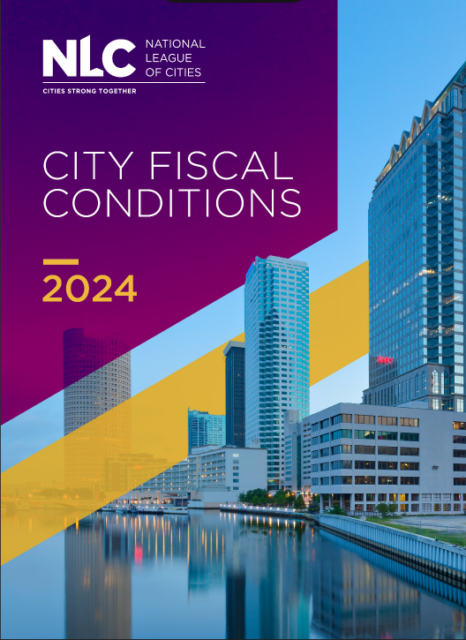In its 39th year, City Fiscal Conditions provides a comprehensive analysis of the financial health of municipalities across the United States. This year’s report underscores the adaptability of cities during significant economic shifts. Explore how cities shifted during the pandemic, strengthening their resilience to major economic disruptions, and emerging strong and ready for the post-pandemic economy.
Executive Summary
This year’s report reveals that municipalities are making the necessary shifts to continue to meet the fiscal needs of their community. This includes maintaining historical investments and managing revenue streams.
Local governments are ensuring that their communities remain resilient, even in the face of declining federal aid through the American Rescue Plan Act. Analysis shows strong growth in revenues and reliable expenditures resulted in a 6.7 percent increase in spending and a 4.9 percent increase in general fund revenues.
Revenue & Spending Trends
In reviewing fiscal trends, compared to FY 2022, average spending by cities in 2023 saw a 6.7 percent increase. FY2024 spending levels continue to increase but at a lower level than between 2022 and 2023.
Tax Sources
Most municipalities earn their revenue through three primary sources: property, sales and income taxes. City Fiscal Conditions has tracked year-over-year changes in these three major revenue sources for the past 29 years.

This year, the 2024 City Fiscal Conditions report finds that both property and sales tax receipts increased substantially. This was impacted by a strong housing market and healthy regional economies.

Chandler, AZ
Experienced a 21.5 percent growth in revenue based on increases in sales tax and other state-shared revenue contributing to the rise.

Dearborn, MI
Witnessed a 26 percent increase in revenue attributable to an increase in federal grants.

Melbourne, FL
The city saw a revenue increase of 20 percent due to elevated property taxes and a surge in intergovernmental revenues.

Major Areas of General Fund Spending
For the first time in its 39-year history, researchers analyzed the breakdown of expenditures in municipal budgets. Analysis shows public safety to be the predominant area of spending, historically and over the last three years.
Consistency in spending by municipal governments indicates a stable financial strategy and a reliable framework for fiscal planning and policymaking.
Meeting Fiscal Needs of Community
Within a one-year span, CFC records a noticeable uptick in confidence among chief finance officers. More than 64 percent surveyed reported being better able to meet their financial needs in 2024 than in FY 2023. Buoyed by federal aid and intervening economic factors, municipalities were better able to meet the needs of their communities.
After ARPA
ARPA and other federal investments have been a cornerstone of economic recovery and infrastructure development for municipalities. Analysis reveals that the majority of finance officers express minimal concern about budget shortfalls post-ARPA.
Cities are preparing for life after ARPA with 65 percent reporting that they are either currently developing a plan or have a fully developed plan to navigate post-ARPA fiscal challenges.







